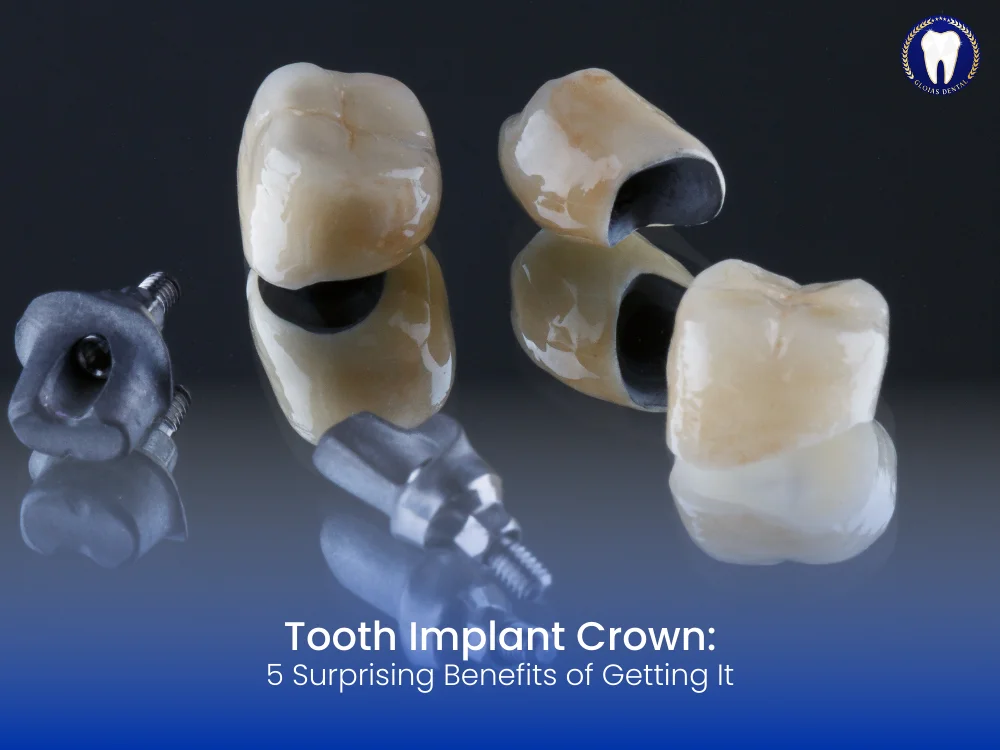A tooth implant crown is a permanent dental restoration used to replace a missing tooth. It combines a dental implant, which is a titanium post inserted into the jawbone, with a dental crown that sits on top to mimic the look and function of a natural tooth. This procedure has become increasingly popular due to its long-lasting results and natural appearance.
While dentures and bridges have traditionally been used to replace missing teeth, a tooth implant crown offers unmatched stability and a better preservation of jawbone density. It is often recommended for patients who have lost a single tooth or need a secure anchor for a dental bridge.
Components of a Tooth Implant Crown
Dental Implant Post
This titanium screw is surgically embedded into the jawbone. Over a few months, it fuses with the bone through a process called osseointegration, forming a strong foundation.
Abutment
This is a connector placed on the implant post after healing. It serves as a base for the crown and ensures stability and alignment.
Dental Crown
The visible part of the tooth replacement, usually made from porcelain, zirconia, or ceramic, is custom-designed to match the color and shape of your natural teeth.
Why Choose a Tooth Implant Crown Over Other Options?
Superior Aesthetics
A tooth implant crown looks and feels like your natural teeth. It’s custom-crafted to blend seamlessly with your smile, offering aesthetic advantages over removable dentures.
Long-Term Durability
With proper care, dental implants can last a lifetime, and the crowns themselves typically last 10–15 years or longer, making them a cost-effective solution over time.
Bone Health Maintenance
Unlike dentures, which can accelerate jawbone deterioration, a tooth implant crown stimulates the jawbone and prevents bone loss.
Improved Oral Function
Tooth implant crowns restore full chewing power, unlike traditional bridges or removable dentures that may shift or cause discomfort.
Tooth Implant Crown Procedure Explained
Initial Consultation and Imaging
The process begins with a comprehensive dental exam, including 3D imaging and digital scans to assess bone density and structure.
Implant Surgery
The dentist surgically inserts the implant post into the jawbone. Healing takes 3–6 months to allow proper osseointegration.
Abutment Placement
Once the bone has healed, the abutment is attached to the implant. This minor procedure is typically done under local anesthesia.
Crown Fitting
The final step is the placement of the tooth implant crown. Your dentist will ensure a perfect fit, both functionally and aesthetically.
Who Is an Ideal Candidate for a Tooth Implant Crown?
- Individuals missing a single tooth or multiple teeth.
- Patients with good oral hygiene habits.
- Those with sufficient jawbone density (or candidates for bone grafting).
- Non-smokers or those willing to quit smoking during the healing process.
Common Materials Used for Implant Crowns
Material | Pros | Cons |
Porcelain | Natural appearance, stain-resistant | Can be brittle under high pressure |
Zirconia | Extremely strong, biocompatible | Slightly opaque look |
Metal-Ceramic | Strong core with aesthetic shell | Less natural-looking than porcelain |
Recovery and Aftercare Tips
- Stick to soft foods for the first few days post-surgery.
- Avoid smoking and alcohol, as they delay healing.
- Maintain excellent oral hygiene with gentle brushing and mouthwash.
- Attend follow-up appointments to monitor integration and healing.
- Avoid grinding or clenching teeth, especially during recovery.
Costs and Insurance Coverage
The average cost for a tooth implant crown in the U.S. ranges between $3,000 and $5,000 per tooth. This includes the implant post, abutment, and the crown itself. Although dental insurance may not cover the entire procedure, many plans provide partial reimbursement or cover certain aspects such as the crown or imaging.
Some clinics offer in-house financing or monthly installment plans, making this treatment more accessible than ever.
Potential Risks and Complications
Though generally safe, the procedure does carry minimal risks:
- Infection at the implant site.
- Nerve damage causing pain or numbness.
- Implant failure due to poor osseointegration (rare with qualified dentists).
- Sinus issues (for upper jaw implants).
Choosing a licensed and experienced dentist drastically reduces these risks.
Longevity: How Long Does a Tooth Implant Crown Last?
When maintained properly, the implant itself can last a lifetime. The crown may need replacement after 10–15 years due to wear and tear. Regular dental check-ups, cleanings, and a healthy lifestyle can greatly extend the life of both components.
FAQs About Tooth Implant Crown
1. How painful is the tooth implant crown procedure?
Most patients report minimal pain, thanks to anesthesia and post-operative pain management. Discomfort typically lasts only a few days.
2. Is a tooth implant crown better than a bridge?
Yes, because it doesn’t require adjacent teeth to be filed down and helps preserve bone structure.
3. How long does it take to complete the entire procedure?
The full process can take 3–6 months, depending on individual healing and whether bone grafting is needed.
4. Can I eat normally after getting a tooth implant crown?
Yes, once the crown is placed and healing is complete, you can eat virtually anything, including hard and chewy foods.
5. Is the tooth implant crown noticeable?
No. A properly designed crown blends naturally with your surrounding teeth in color, shape, and size.
6. Can smokers get a tooth implant crown?
Yes, but smoking increases the risk of implant failure. Dentists often recommend quitting before and after the procedure.

